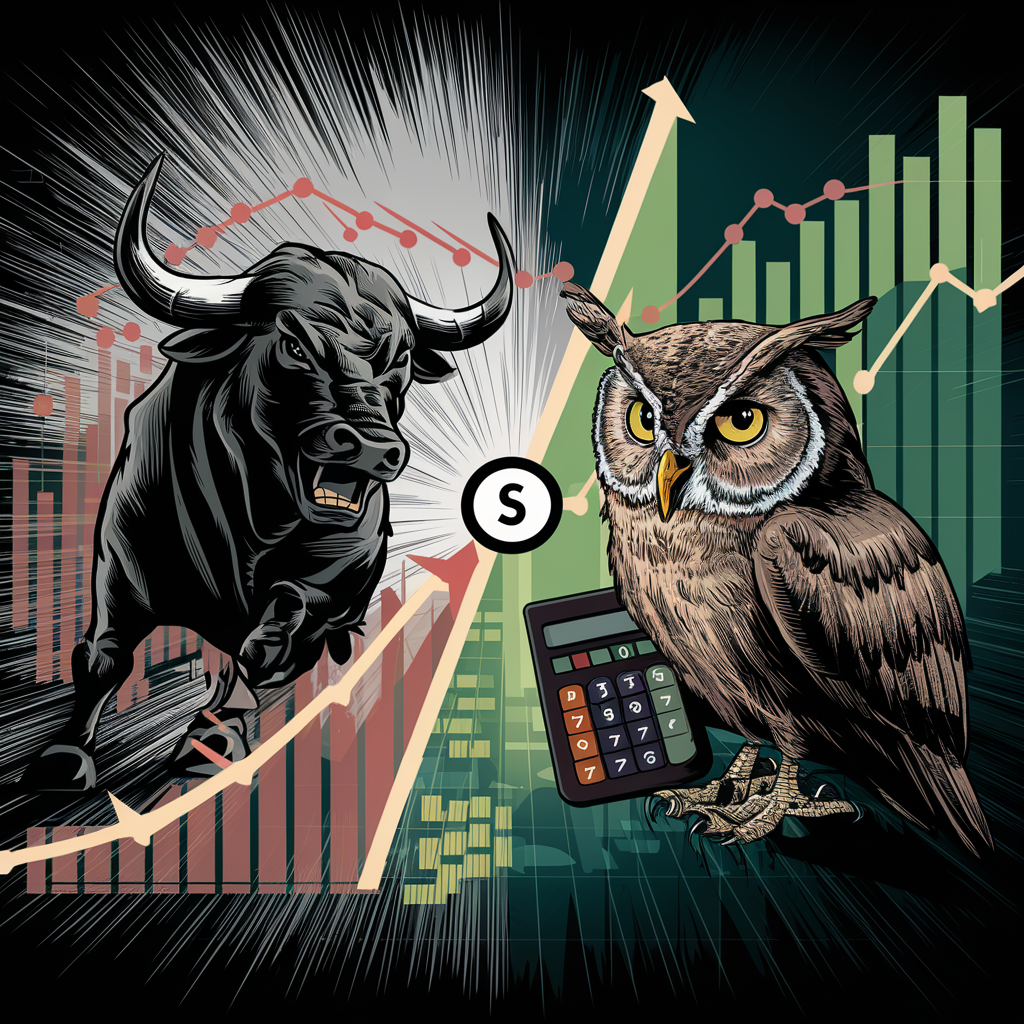The Sensex and Nifty serve as market indices, reflecting the overall market performance. They act as benchmarks for assessing the country's stock market trends, industry progression, and the performance of individual investor portfolios. This article provides a comprehensive overview of Sensex and Nifty, including their calculation methods and the distinctions between them.
What is Sensex?
Sensex originates from blending "Sensitive" and "Index," a term coined by Mr. Deepak Mohoni, a stock market analyst. It serves as an index on the Bombay Stock Exchange (BSE), consisting of 30 companies meticulously selected based on criteria such as liquidity, market capitalization, revenue, and diversification. Additionally, inclusion in the Sensex requires a company to be listed on the BSE.
As one of India's earliest indices, it holds significance as a gauge of market performance and a reflection of the Indian economy. Serving as a benchmark, it aids in assessing economic growth, industry development, and comprehending stock market trends. Comprising the top 30 stocks, the Sensex's value is contingent upon the price movements of its underlying securities. A rise in Sensex value correlates with an increase in the prices of the majority of these securities, whereas a decrease is attributed to declines in their prices.
What is Nifty?
Similar to the Sensex, Nifty is also an index. The National Stock Exchange is represented by Nifty. Nifty is a variation of the terms National and Fifty. The Nifty 50 is also a benchmark index, consisting of the top 50 stocks listed on the National Stock Exchange. The top 50 stocks that comprise the Nifty 50 are from 12 different sectors. Some of these include information technology, consumer goods, financial services, automobiles, telecommunications, etc.
For a company to qualify for inclusion in the Nifty 50, it must adhere to the following parameters and criteria:
- Liquidity: The stock must have been traded at an average cost of 0.50% or less in the last six months.
- Float Adjustment: The company's float-adjusted market capitalization must be at least twice that of the current smallest index composition.
- Domicile: The company must be listed on the National Stock Exchange (NSE) and be an Indian company.
Which is better, NSE or BSE?
NSE and BSE are both stock exchanges situated in India. The Bombay Stock Exchange (BSE) holds the distinction of being the oldest stock exchange in the country. Conversely, the National Stock Exchange (NSE) is the largest stock exchange in India, boasting significantly higher trade volumes compared to BSE. In practical terms, this means that NSE sees a greater number of active buyers and sellers and enjoys enhanced liquidity. As a result, trading on NSE is smoother and provides investors with increased opportunities to convert stocks into cash.
Conversely, BSE represents a vast reservoir of stocks, encompassing numerous companies within its listing. Additionally, all stocks listed on NSE are also included in BSE. Moreover, in the derivatives segment, NSE holds a monopoly, particularly with Nifty. NSE Nifty and Bank Nifty are notably active and heavily traded.
Hence, BSE tends to be a better fit for beginners, whereas NSE is typically favored by experienced traders and investors. Moreover, for those seeking to invest in emerging companies, BSE is the preferred option. However, for traders specializing in futures and options, NSE's derivatives market is the optimal choice.
What is an Index?
An index serves as a market benchmark that monitors the performance of a collection of securities, symbolizing the overall market. Comprised of securities selected according to market capitalization or other criteria, any fluctuation in the prices of these underlying securities directly impacts the index's value. As the index mirrors the entire market, any alteration in its value influences not only listed companies but also other financial products, including commodities.
Indexes are also formulated to assess economic indicators such as inflation and interest rates. Serving as benchmarks, they enable the evaluation of portfolio returns. Investors can analyze their investment portfolio returns in comparison to benchmark returns and adjust their portfolios accordingly. The widely recognized indexes in the country include Nifty 50 and BSE Sensex.
Major factors that affect the performance of indices
Frequently, the stock market mirrors the condition of the country's economy. In times of an economic slowdown, the market tends to exhibit sluggishness as well. Below are several factors that influence the performance of the indices:
- Interest Rate
Fluctuations in interest rates lead to fluctuations in the stock market index. For instance, if the government raises interest rates, companies face higher borrowing costs. Consequently, companies may attempt to reduce their expenses, potentially leading to adverse effects on their earnings and share prices.
- Inflation Rate
Inflation similarly influences the stock market indices. For instance, during periods of high inflation, individuals often lack surplus funds for investments, thereby diminishing their investment capacity. Moreover, companies are adversely affected as higher input costs are passed on to customers, directly impacting sales and earnings. Consequently, this phenomenon also exerts pressure on share prices.
- Global Economy
Global economic slowdowns significantly affect equity markets. Additionally, currency exchange rates (rupee movements), crude oil prices, political instability, and other factors also influence stock market performance.
Types of Stock Market Indices
A stock market index not only reflects the overall market but also includes sector-based indices representing specific industries. Additionally, there are market capitalization-based indices representing companies falling under particular market caps. Here are the various types of market indices:
- Benchmark index
A benchmark index encompasses the entirety of the stock market, aiding in the analysis and comprehension of market trends. It serves as a standard for evaluating the performance of individual investment portfolios. In India, prominent benchmark indices include BSE Sensex and Nifty 50.
- Broad market index
A broad market index, like a benchmark index, encompasses a larger number of stocks. For instance, while BSE Sensex consists of 30 financially stable companies, BSE 100 comprises the top 100 companies, making it a broader market index.
- Market capitalisation index
A market capitalization index centers on a specific market cap, encompassing all companies falling within that range. Examples include BSE Small Cap and Nifty Midcap.
- Industry or sector-based index
Sector-based indices depict an entire industry, encompassing companies within that sector. Examples include Nifty Pharma, Nifty FMCG, and Nifty Auto, among others.
Significance of a Stock Market Index
Nifty and Sensex are stock market indexes that provide insights into the market's performance. Individuals can examine and analyze stock market patterns using these indices.
- Helps in stock picking
With thousands of companies listed on the exchange, investors face challenges in thoroughly reviewing all stocks before making investment decisions. Thus, without a benchmark index, distinguishing between two stocks can be daunting. In such instances, stock market indices prove invaluable. Moreover, indices categorize stocks based on industry, size, financial impact, etc., enabling investors to compare constituent stocks and streamline their analysis of companies.
- Helpful for beginners
Given the high volatility of stock markets, investors must exercise caution and proceed with care. Since beginners may lack awareness of market dynamics, stock market indices serve as valuable reference points for understanding and analyzing market performance. Beginner investors who opt for self-directed investing, without hiring a financial advisor, can utilize indices to track and invest wisely.
- Reflects investor sentiments
Through movements in the stock market index, individuals can assess investor sentiments. For instance, specific reforms or business announcements may exert pressure on particular stocks. In essence, some investors believe that such news could influence a company and, accordingly, make decisions to buy or sell its stock. However, it's crucial to analyze the underlying sentiment to gauge the potential impact of any trend.
- Passive investment option
Through movements in the stock market index, individuals can assess investor sentiments. For instance, specific reforms or business announcements may exert pressure on particular stocks. In essence, some investors believe that such news could influence a company and, accordingly, make decisions to buy or sell its stock. However, it's crucial to analyze the underlying sentiment to gauge the potential impact of any trend.
How to calculate Nifty?
By observing fluctuations in the stock market index, individuals can gauge investor sentiments. For example, particular reforms or business announcements might apply pressure on specific stocks. Essentially, some investors perceive such news as influential to a company and thus make decisions to buy or sell its stock accordingly. Nevertheless, analyzing the underlying sentiment is essential to accurately assess the potential impact of any trend.
How to calculate Sensex?
The calculation of Sensex relies on the free-float market capitalization of the underlying 30 companies and the base value of the Sensex. Here are the steps involved in calculating the Sensex value:
- First, determine the market capitalization of all 30 companies.
- Next, estimate the free-float market capitalization of these companies and aggregate them to obtain the total free-float market capitalization.
- The Sensex formula is as follows: (Free float market capitalization of 30 companies / Base market capitalization) * Base value of the index.
- The free-float market capitalization has been previously determined. The base market capitalization stands at INR 2501.24 crore, representing the value of Sensex's market capitalization in the year 1978-79, with a base value of 100.
- All these values are inserted into the Sensex formula to ascertain the value of Sensex.
FAQ
- What are Sensex and Nifty, and what purpose do they serve?
Sensex and Nifty are market indices that reflect overall market performance and serve as benchmarks for assessing stock market trends, industry progression, and individual investor portfolios.
- Who coined the term "Sensex," and how is it calculated?
Sensex, derived from "Sensitive" and "Index," was coined by Mr. Deepak Mohoni. It is calculated based on the free-float market capitalization of 30 selected companies listed on the Bombay Stock Exchange (BSE).
- What criteria do companies need to meet to be included in Sensex and Nifty?
Companies must meet specific criteria related to liquidity, market capitalization, and listing on the respective exchanges to be included in Sensex (BSE) and Nifty (NSE).
- What distinguishes the National Stock Exchange (NSE) from the Bombay Stock Exchange (BSE)?
NSE is the largest stock exchange in India, boasting higher trade volumes and liquidity compared to BSE, which is the oldest stock exchange. NSE also holds a monopoly in the derivatives segment with indices like Nifty.
- Which exchange is better for beginners, NSE, or BSE?
BSE is often recommended for beginners due to its simplicity, while NSE is preferred by experienced traders and investors for its liquidity and advanced trading options.





